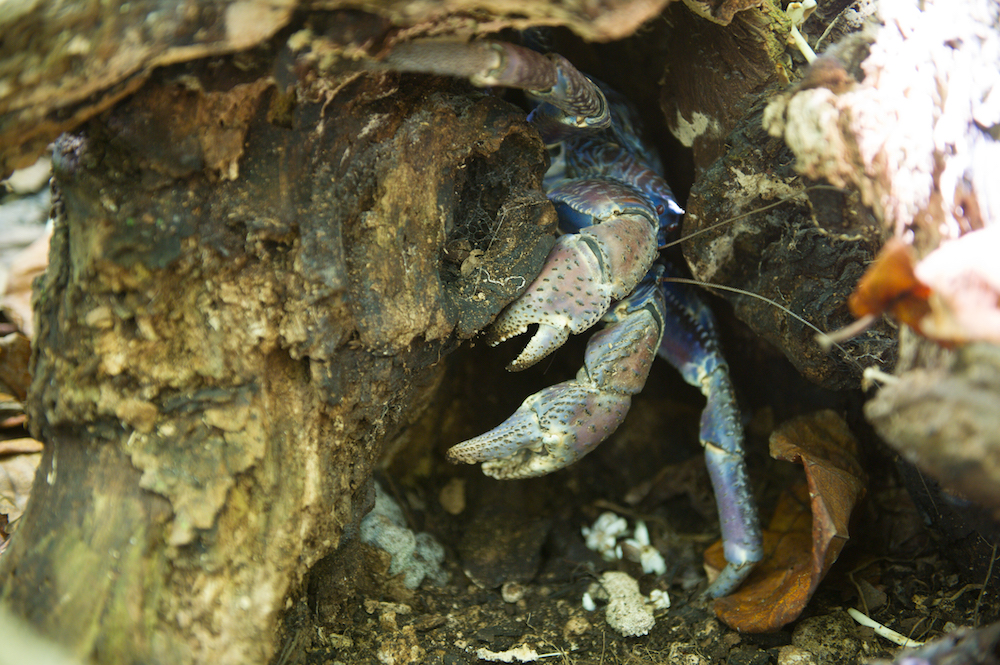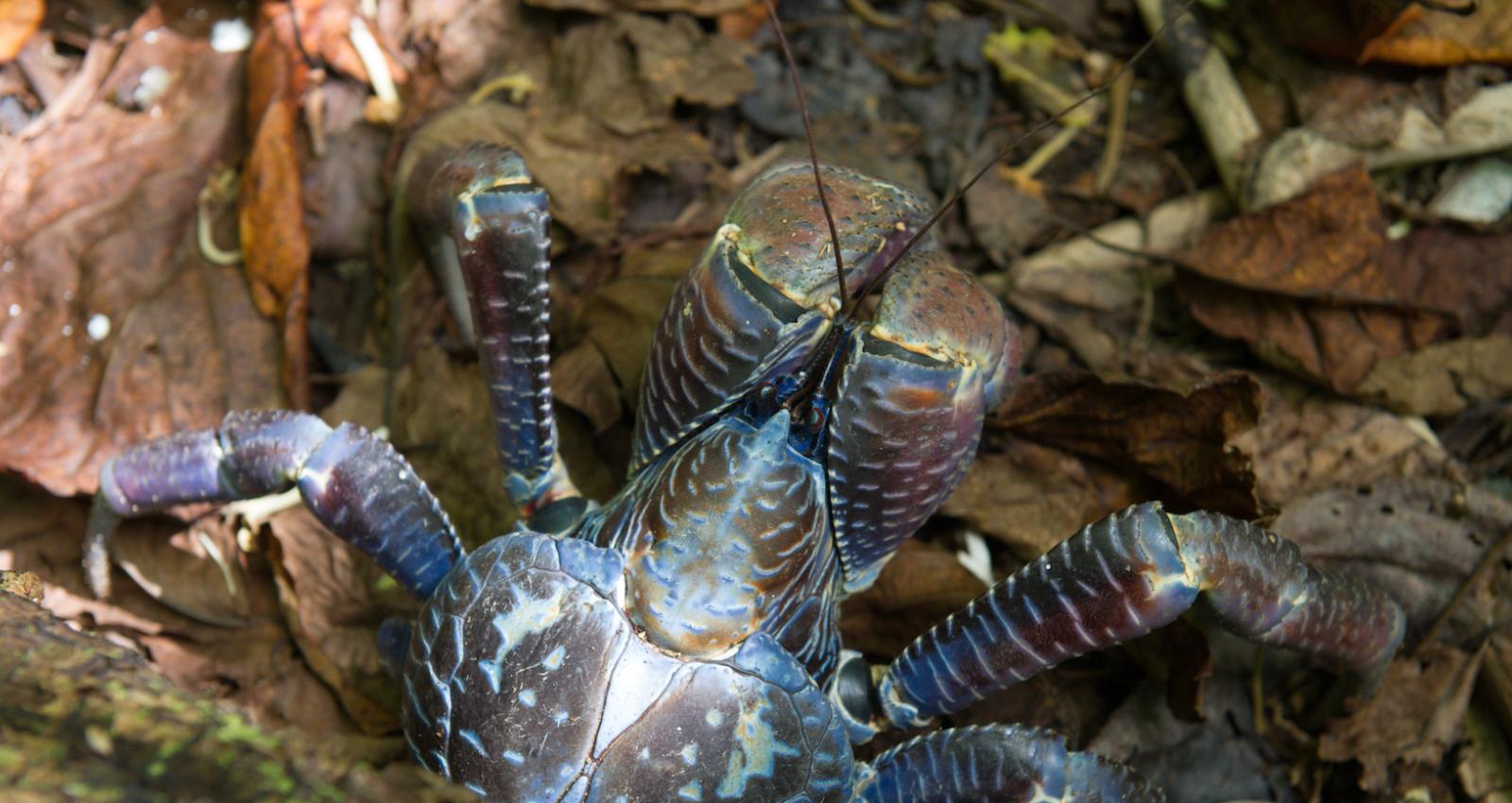A climbing coconut crab in the Pisonia forest on Motu Reiono.
Up in the trees
Adult coconut crabs live on land, returning to sea only to release their fertilized eggs. They live alone in their burrows, where they usually stay during the day, avoiding the heat and preventing water loss. Even though they are more active at night, on Tetiaroa, especially in the forest of motu Reiono, we often see them up in the trees during daytime hours.
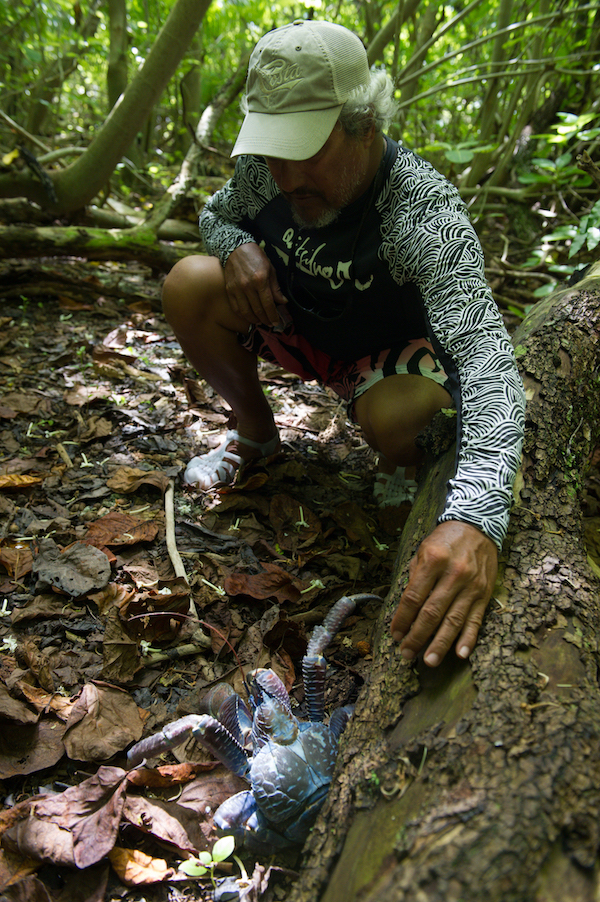
The above excerpt from M.B’s notes for his atoll, Tetiaroa, is a perfect summary of what characterizes a coconut crab.
The most striking thing about these crabs is how big they can grow, which gives them the distinction of being the largest land crabs in the world. The biggest coconut crab ever recorded had a 1m (3ft) leg span and weighed 17 kg.
They are also extremely powerful, their claws are strong enough to cut open a coconut to eat it, hence their name.
“Robber crabs” is another name they go by because of their opportunistic behaviour. They prefer coconut flesh or fruits, but they will also eat almost whatever they come across : birds, other crabs, turtles, rats... They have even been seen in kitchen sinks, trying to scrape leftovers from dishes. They have a powerful sense of smell.
Coconut Crab Population Study
Since 2017, at the request of the Polynesian direction of Environment, Te Mana o te Moana, has been surveying Tetiaroa’s coconut crab population. Even though B. latro is categorized as “data deficient” on IUCN red list, it is an important resource on islands in the Indian and Pacific Oceans and must be well managed. In 2017, Fiji banned the taking of coconut crabs.
The results from the 4 surveys done in French Polynesia show that coconut crab population has been over-harvested, and in July 2016, French Polynesia put in force a regulation on ‘kaveu’ consumption.
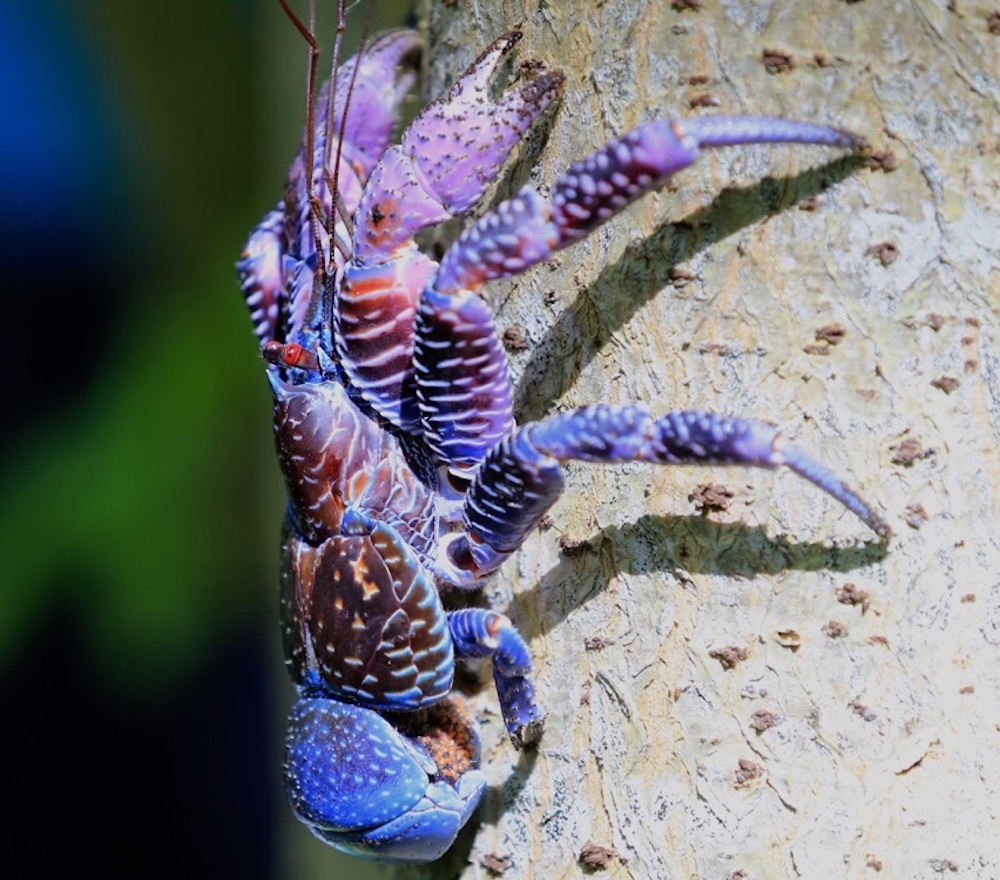
2 different decapods
Coconut crabs and hermit crabs belong to the same family Coenibitidae. Like all decapods they have a cephalothorax, 10 legs, and an abdomen. Unlike hermit crabs, Birgus latro can harden their abdominal terga, the soft part hermit crabs usually protect with a gastropod shell.
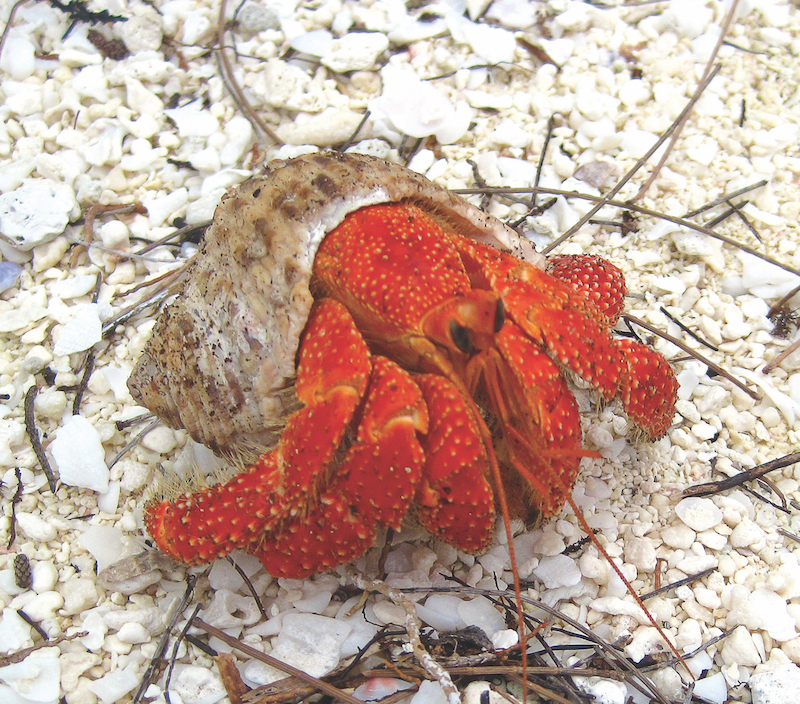
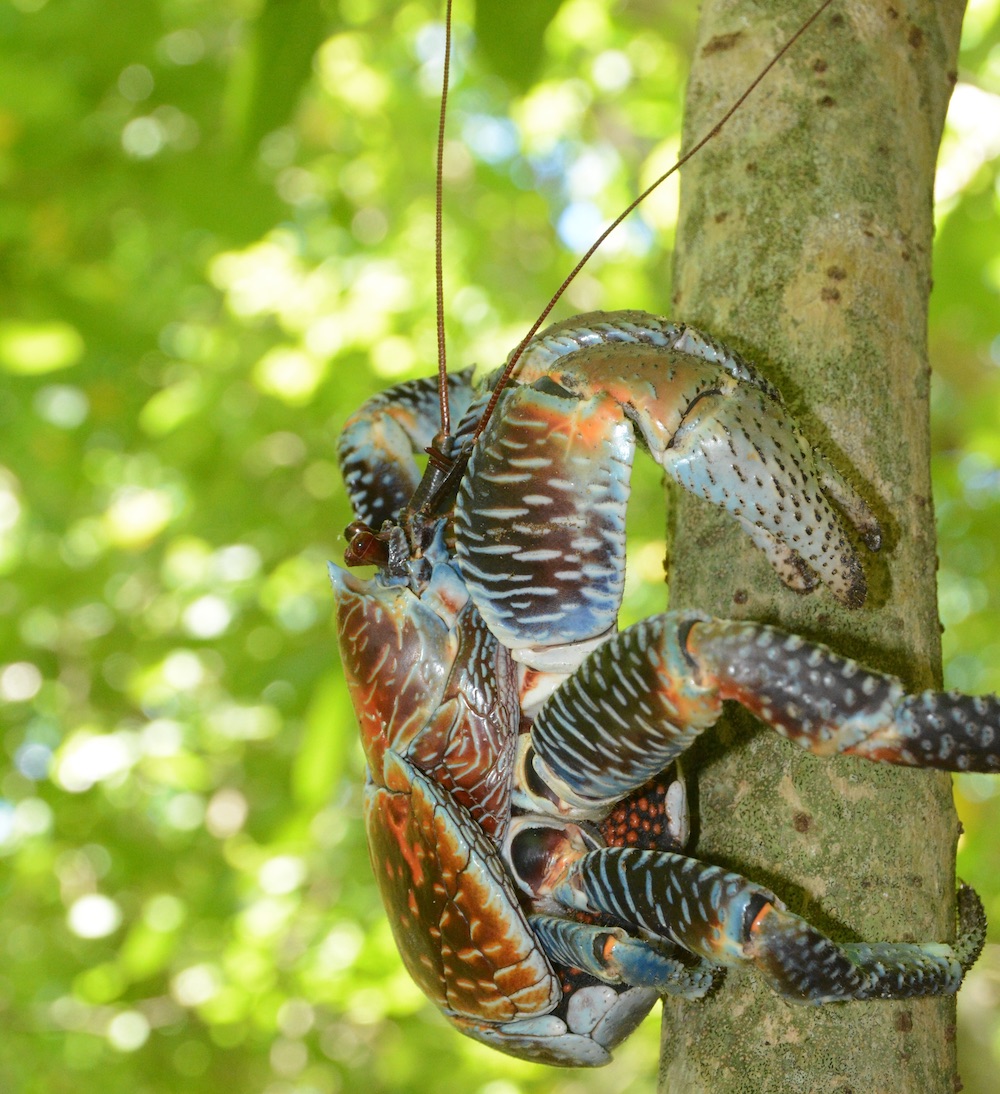
Reproduction: There is a dimorphism among coconut crabs. Females have three extra legs called pleopods, located on the left hand side of the abdomen and used to carry eggs. Under what appears to be a hug, males lay spermatophores underneath a female’s thorax, then eggs are extruded by females and fertilized.
After 25 to 45 days, eggs are ready to be released in the ocean. In approximately 1 - 2 months, the larvae transform into crabs and take on a snail shell to protect their soft thoraxes. During his time, coconut crabs spend time on land and in the sea.
It takes at least 5 years to reach adulthood. Adults only live and reproduce on land, and will actually drown if submerged. However, they still do need a source of water to maintain the moisture which insures the proper functioning of their branchiostegal lungs, organs which lie midway between lungs and gills.
They need to moult several times as juveniles, but when they reach sexual maturity (between 5 and 10 years, TL>28 mm ) they moult once a year. On Tetiaroa it seems to happen at two different periods: from January to March and also June to September.
Adults usually reach around 80 mm in thoracic length and can live up to 60 years. After moulting, they bury themselves in the ground for 3 to 16 weeks, depending on their size, and will stay hidden for protection until their exoskeleton is fully hardened. On Tetiaroa, this seems to happen between June and September.
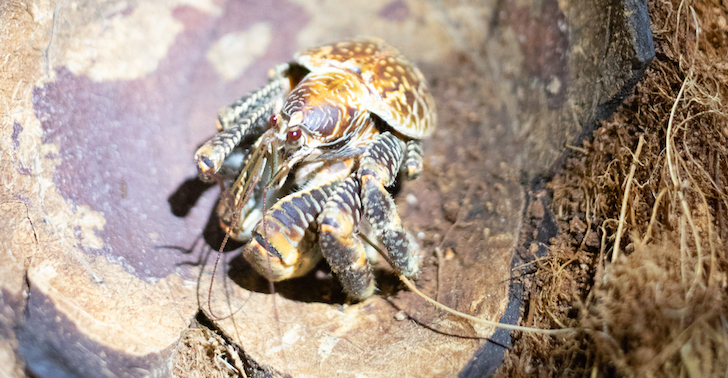
Despite the large population of adult kaveu, the survey team hasn't found many juveniles on Reiono, and the assumption was that rat predation was the cause.
Soon, however, the actual reason why the juvenile density was low will soon be answered, as motu Reiono is now completely rat-free. The survey team will now be monitoring the impact of the rat eradication program on the juvenile population of coconut crabs.
Stay tuned for updates on facebook, instagram and twitter.
